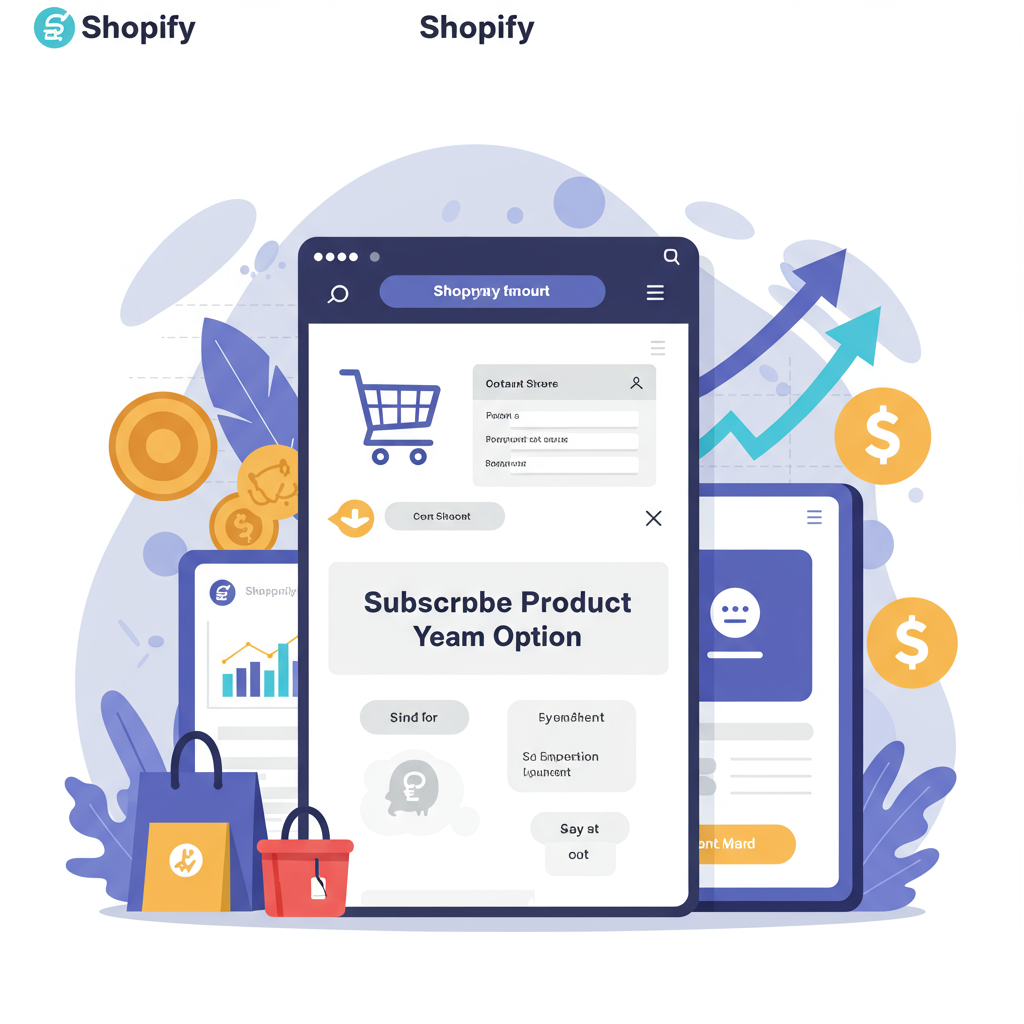How I Set Up Recurring Revenue Streams on Shopify for Sustainable Business Success
Hello fellow merchants! Today, I want to share my insights on a game-changer for any e-commerce business: setting up subscriptions on Shopify. In my journey, I’ve seen firsthand how moving beyond one-time purchases can transform a business.
The traditional e-commerce model often relies on constant new customer acquisition, which can be expensive and unpredictable. Subscriptions, however, offer a powerful antidote to this challenge.
They introduce a predictable revenue stream, allowing for better financial forecasting and more stable growth. This stability is something I’ve personally come to value immensely.
Beyond just revenue, subscriptions foster deeper customer relationships. When customers commit to recurring purchases, they become more engaged with your brand, leading to increased loyalty and a higher Customer Lifetime Value (CLTV).
So, how do we, as Shopify merchants, tap into this potential? The core of setting up subscriptions on Shopify lies in choosing the right tools and implementing a thoughtful strategy.
Shopify itself doesn’t have robust native subscription capabilities out-of-the-box for recurring billing. This means we’ll need to integrate with a third-party application.
When I first explored this, the sheer number of options felt a bit overwhelming. My advice is to look for apps that offer comprehensive features, not just basic recurring billing.
Key features I prioritize include a robust customer portal, flexible billing frequencies, dunning management (more on this later!), detailed analytics, and seamless integration with Shopify.
Some of the most popular and reliable options I’ve encountered are Recharge Subscriptions, Bold Subscriptions, and Appstle Subscriptions. Each has its strengths, so it’s worth exploring which one aligns best with your specific business needs and budget.
Once you’ve selected your app, the next step is configuring your products. You’ll typically need to decide which products are eligible for subscription and whether they can also be purchased as one-time items.
I often recommend offering both options. This gives customers flexibility and can serve as an entry point for those hesitant to commit to a subscription immediately.
You’ll also define your subscription frequencies – weekly, monthly, quarterly, annually. Think about what makes the most sense for your product’s consumption rate. For consumables, monthly is often ideal.
Pricing strategy is crucial. I’ve found that offering a slight discount for subscribing is a powerful incentive. For example, “Subscribe and save 10%.” This makes the recurring option more attractive than a one-time purchase.
Consider tiered pricing or introductory offers. A lower price for the first few months can reduce the barrier to entry, and you can then transition to the standard subscription rate.
Now, let’s talk about the customer experience. This is paramount for retention. Your chosen subscription app should provide a user-friendly customer portal where subscribers can manage their own subscriptions.
This means they should be able to easily pause, skip, or cancel orders, update their shipping address, and change payment information without needing to contact customer support.
Empowering customers with self-service options significantly reduces support tickets and improves overall satisfaction, which directly impacts your churn rate.
Payment gateways are another critical piece. Ensure your chosen subscription app is compatible with your preferred payment processor. Most popular apps work seamlessly with Shopify Payments, Stripe, and PayPal.
A feature I cannot stress enough the importance of is dunning management. “Dunning” refers to the process of recovering failed recurring payments.
Automated dunning sequences, which include retrying failed cards and sending automated email notifications to customers, are vital for minimizing involuntary churn due to expired cards or insufficient funds.
Without effective dunning, you’ll lose valuable subscribers simply because of payment issues, not because they wanted to cancel. This is low-hanging fruit for revenue recovery.
Once your subscription model is set up, how do you get customers to sign up? Marketing your subscription options effectively is key.
Clearly highlight the benefits of subscribing on your product pages – convenience, savings, never running out. Use clear calls to action like “Subscribe & Save.”
Consider creating dedicated landing pages or even running specific marketing campaigns targeting potential subscribers. Showcase the value proposition prominently.
Finally, always be analyzing. Track key metrics like Monthly Recurring Revenue (MRR), churn rate, and Customer Lifetime Value (CLTV). These insights will help you identify areas for improvement.
Use this data to refine your product offerings, adjust pricing, or improve your customer service. Continuous optimization is the path to long-term subscription success.
Don’t forget legal considerations. Clearly outline your subscription terms and conditions, cancellation policies, and refund policies. Transparency builds trust.
What do you think about this article? I’d love to hear your thoughts and experiences with Shopify subscriptions.
In my experience, while setting up subscriptions requires initial effort, the long-term benefits of predictable revenue and enhanced customer loyalty are well worth the investment. It’s a strategic move for sustainable growth.
So, if you’re looking to build a more resilient and profitable e-commerce business, I strongly encourage you to explore integrating subscriptions into your Shopify store. It’s a journey that has truly transformed my approach to business.






